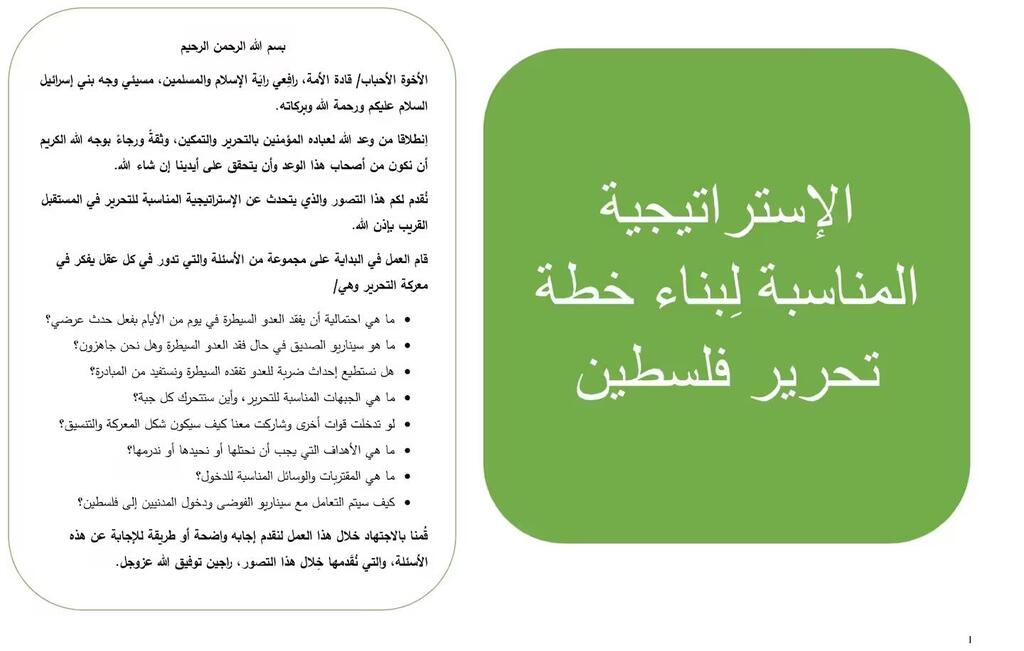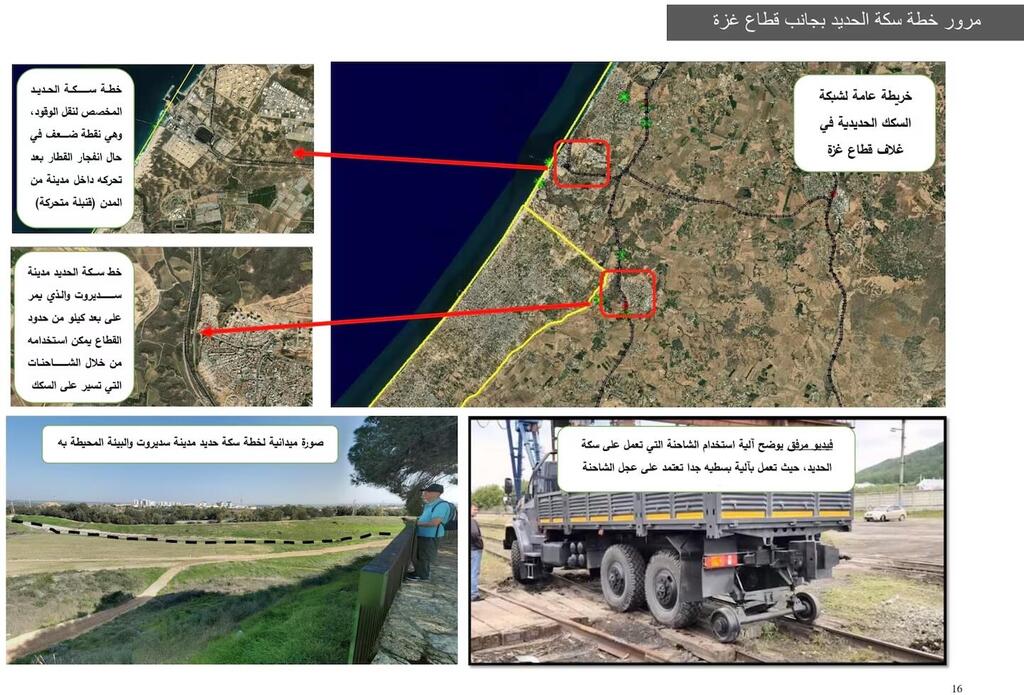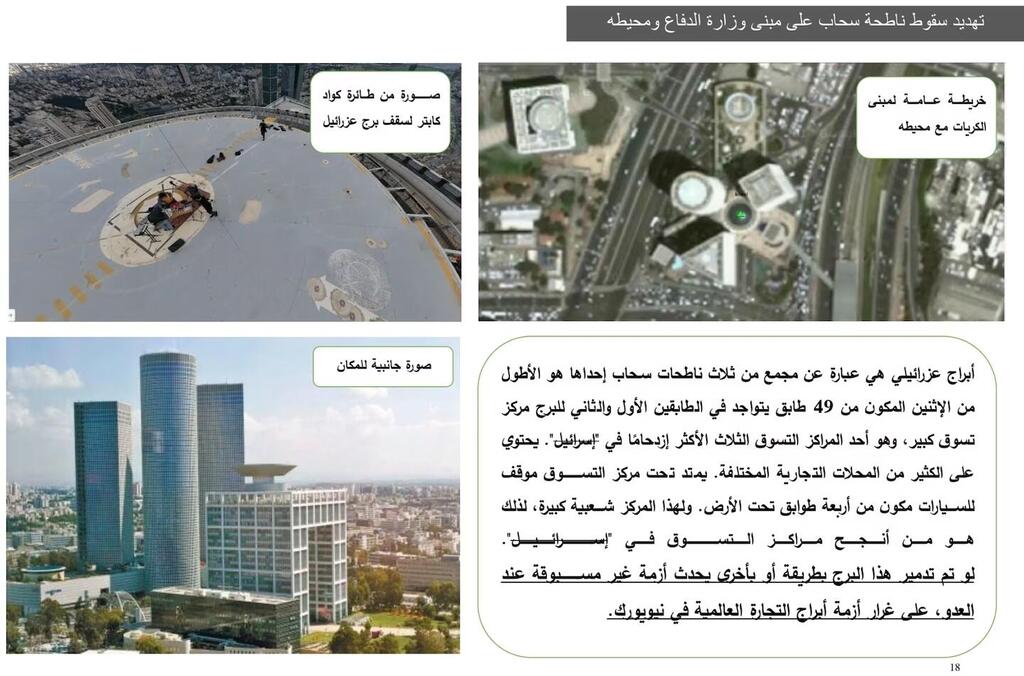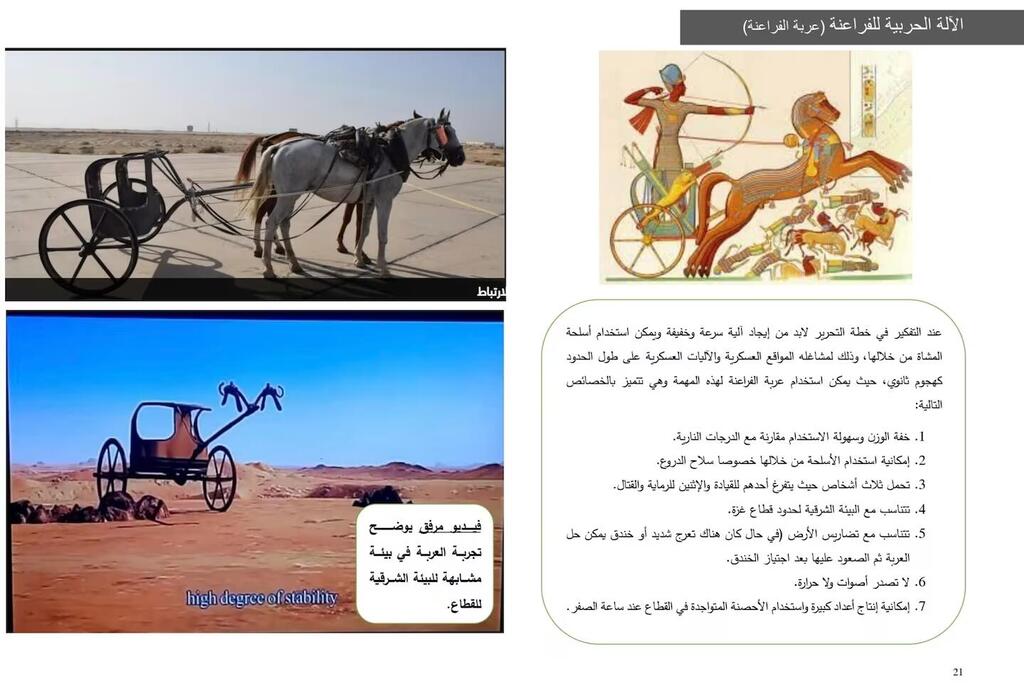Hamas leaders had plans for large-scale assaults on Israel, including a 9/11-style attack on skyscrapers in Tel Aviv, even before launching their deadly incursion into Israeli border communities on October 7 of last year, The Washington Post reported on Saturday, citing both digital files and paper records recovered from Hamas command centers by IDF forces in Gaza.
The documents outline a broad attack strategy involving the use of railways, boats, and even chariots, according to the Washington Post report. However, terrorism experts noted that many of these plans were not practical.
6 View gallery


Hamas leader Yahya Sinwar and Moshe Aviv Tower in Ramat Gan
(Photo: AFP, emkaplin/Shutterstock)
The 59-page trove of documents also details a 2021 request from Hamas to Iran for $500 million in funding, along with training for 12,000 additional Hamas operatives.
Letters from Sinwar to Khamenei and Qaani
Documents from 2021 indicate that Hamas leader Yahya Sinwar reached out to senior Iranian officials, including Iran’s Supreme Leader Ayatollah Ali Khamenei, seeking additional financial and military support.
In a letter, Sinwar claimed that with Iran's backing, Hamas could achieve the total destruction of Israel within two years. "We promise you that we will not waste a minute or a penny unless it takes us toward achieving this sacred goal," Sinwar wrote in June 2021.
While the letter did not provide details on how Hamas planned to destroy Israel, it was also addressed to Esmail Qaani, commander of Iran’s Quds Force, who has been out of the public eye for two weeks amid reports of his investigation over alleged ties to Israel and a subsequent heart attack.
Months before the October 2023 assault, Hamas had considered an even broader attack plan. A 36-page presentation, discovered at a Hamas outpost in northern Gaza on November 10, outlined potential scenarios for a multi-front assault on Israel, targeting military bases and civilian locations such as shopping malls.
The Arabic document, titled “Strategy to build an appropriate plan to Liberate Palestine,” contains dozens of maps, photographs and schematics showing Hamas movements and follow-up attack strategies across Israel.
A vast database of over 17,000 images
According to the presentation, Hamas' attack plans were based on a vast database of over 17,000 images, including satellite photos and drone-captured footage of Israeli cities. The database also featured imagery from social media, covering key military and civilian sites such as Israeli Air Force bases and diagrams of civilian flight paths to Ben Gurion Airport.
The presentation outlined three attack scenarios, with tactics for deceiving Israeli defenses. Some of the planned operations were "low-tech," similar to methods used in the October 7 attacks, while others were far more ambitious.
One such goal was to bring down prominent skyscrapers in Tel Aviv, including the 68-story Moshe Aviv Tower in Ramat Gan and the Azrieli Towers complex, which comprises three skyscrapers, a large shopping mall, a train station and a cinema.
“If this tower is destroyed in one way or another, an unprecedented crisis will occur for the enemy, similar to the crisis of the World Trade Center towers in New York,” the document noted, though Hamas had not yet devised a method to achieve this. “Working to find a mechanism to destroy the tower.”
Last week, Israeli prosecutors charged several residents of the central Israeli town of Taibeh with plotting to attack the Azrieli Towers and bring about its collapse.
A more practical target, according to the documents, was Israel’s railway system. Hamas outlined various scenarios for using trains to transport fighters and powerful explosives. “The railway line is designated for transporting fuel, which is a weak point in the event of a train explosion after moving inside one of the cities (a moving bomb),” the document read.
Explosive-laden boats and chariots
Other documents showed Hamas planned to modify vehicles to travel on rails and convert fishing vessels into fast-attack boats capable of carrying fighters and explosives to infiltrate Israeli ports. Regarding the boat-bombing plan, the documents state that Hamas had "found a working mechanism."
One of the most unconventional proposals outlined in the documents involved using horse-drawn chariots, reminiscent of ancient times, as a "modern" transport method for terrorists and weapons.
The presentation included photos and descriptions of a chariot that could carry three people, traverse rough terrain with ease and operate more quietly than a motorcycle while emitting less heat.
Meanwhile, a New York Times report revealed minutes from ten meetings held by Sinwar with the Hamas’ high command. The meeting summaries, found on a computer in Khan Younis and obtained by the Times, provided new insight into Hamas' preparations for the October 7 attack, code-named "The Big Project."
The report also highlighted Hamas' deception strategy, which emphasized maintaining silence, even during Ramadan, and instructed members not to join the fighting alongside Palestinian Islamic Jihad.
The documents further revealed that Hamas aimed to launch its attack before Israel completed its laser weapon development and requested Iran to target sensitive sites with missile strikes during the first hour of the assault.
Terrorists on Zikim beach on Oct. 7
Get the Ynetnews app on your smartphone:









